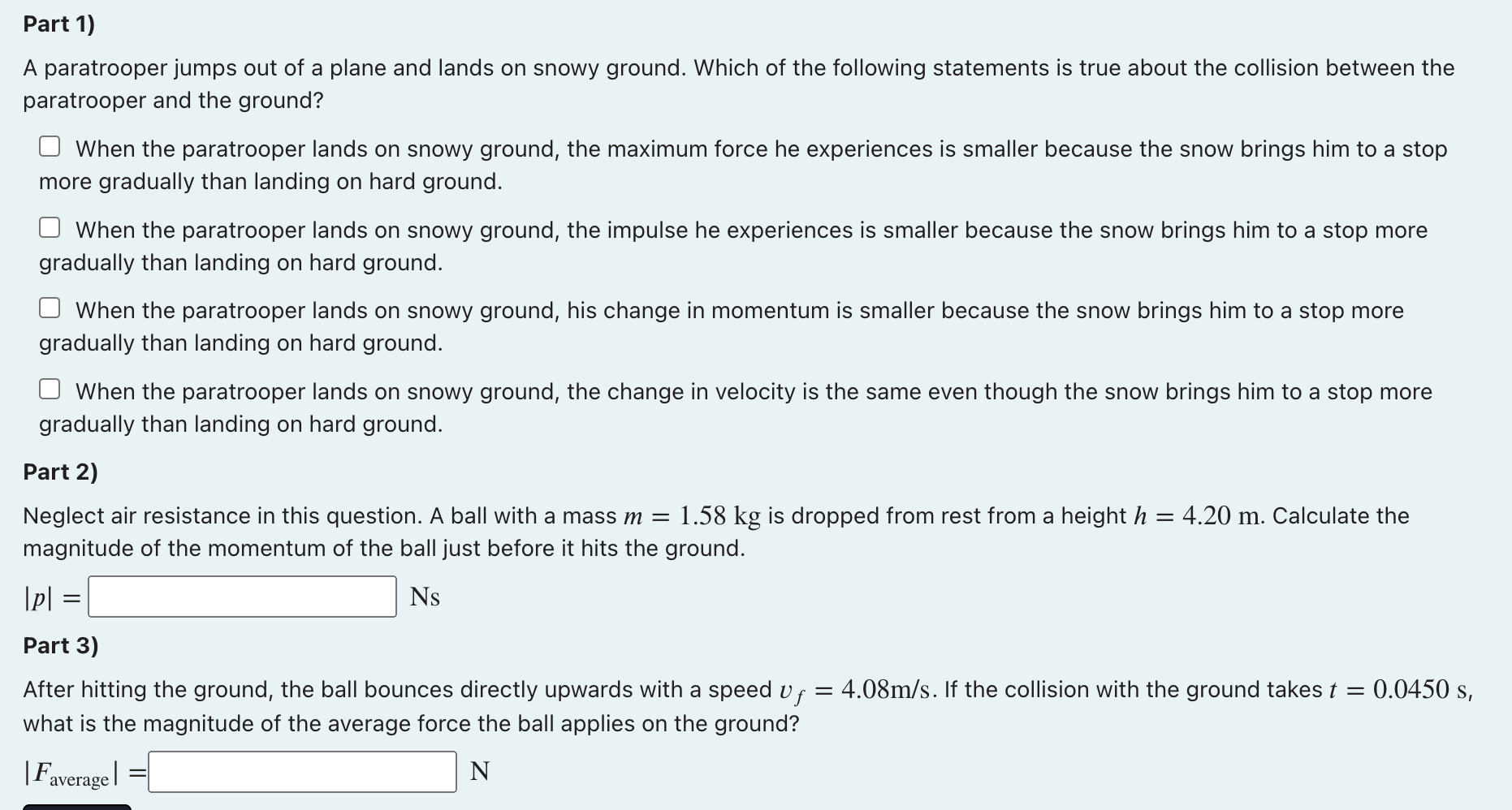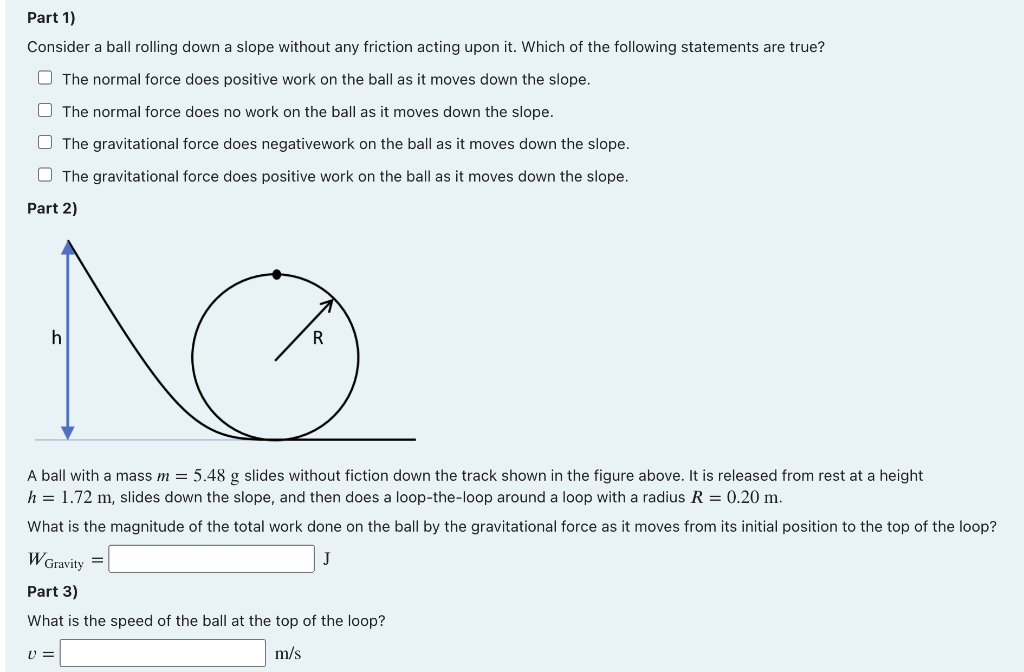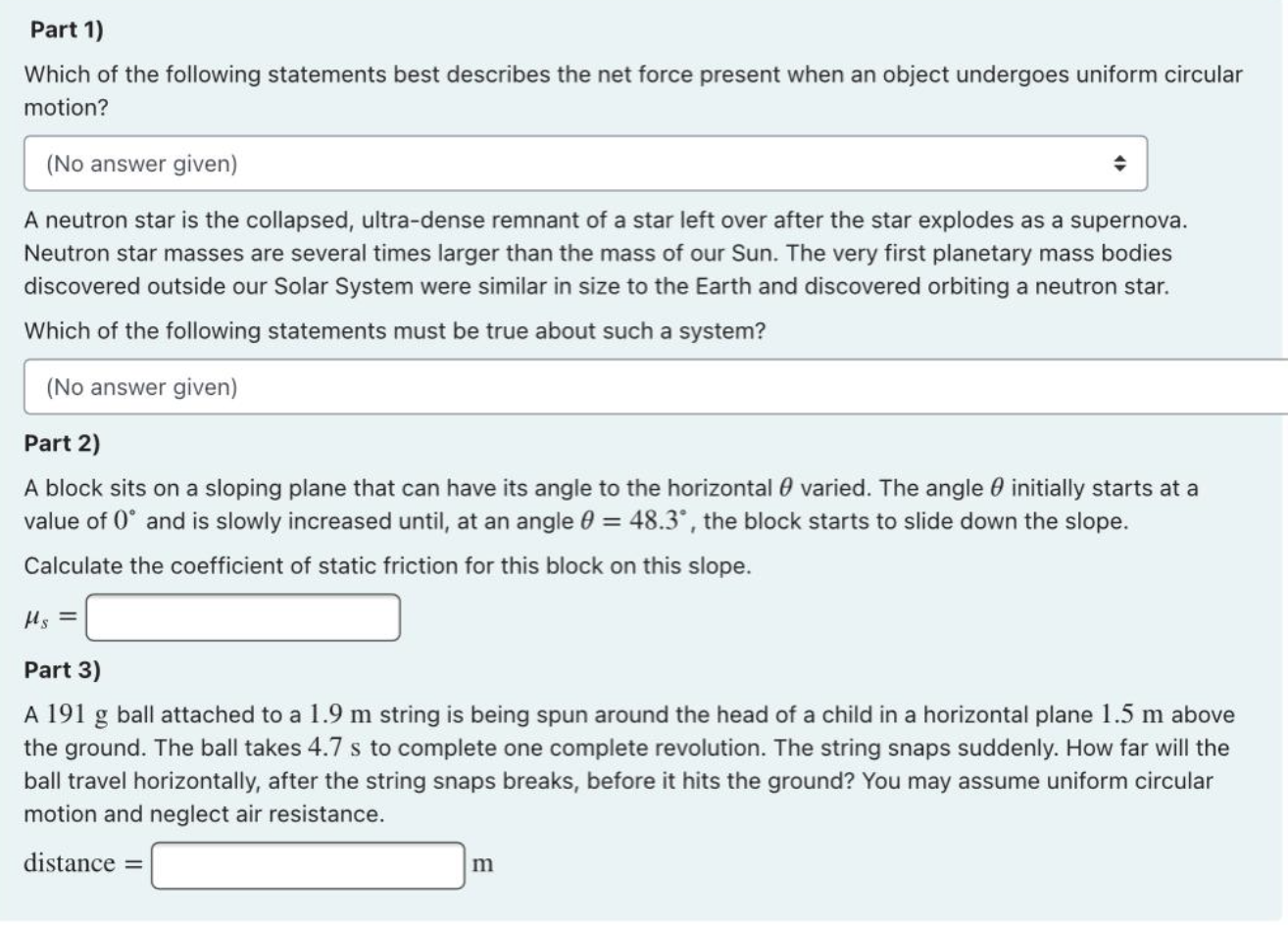Home /
Expert Answers /
Physics /
part-1-a-paratrooper-jumps-out-of-a-plane-and-lands-on-snowy-ground-which-of-the-following-state-pa455
(Solved): Part 1) A paratrooper jumps out of a plane and lands on snowy ground. Which of the following state ...
Part 1) A paratrooper jumps out of a plane and lands on snowy ground. Which of the following statements is true about the collision between the paratrooper and the ground? When the paratrooper lands on snowy ground, the maximum force he experiences is smaller because the snow brings him to a stop more gradually than landing on hard ground. When the paratrooper lands on snowy ground, the impulse he experiences is smaller because the snow brings him to a stop more gradually than landing on hard ground. When the paratrooper lands on snowy ground, his change in momentum is smaller because the snow brings him to a stop more gradually than landing on hard ground. When the paratrooper lands on snowy ground, the change in velocity is the same even though the snow brings him to a stop more gradually than landing on hard ground. Part 2) Neglect air resistance in this question. A ball with a mass m = 1.58 kg is dropped from rest from a height h = 4.20 m. Calculate the magnitude of the momentum of the ball just before it hits the ground. Ip Ns Part 3) After hitting the ground, the ball bounces directly upwards with a speed of = 4.08m/s. If the collision with the ground takes t = 0.0450 s, what is the magnitude of the average force the ball applies on the ground? |Faverage | N
Part 1) Consider a ball rolling down a slope without any friction acting upon it. Which of the following statements are true? The normal force does positive work on the ball as it moves down the slope. The normal force does no work on the ball as it moves down the slope. The gravitational force does negativework on the ball as it moves down the slope. The gravitational force does positive work on the ball as it moves down the slope. Part 2) A ball with a mass m = 5.48 g slides without fiction down the track shown in the figure above. It is released from rest at a height h = 1.72 m, slides down the slope, and then does a loop-the-loop around a loop with a radius R = 0.20 m. What is the magnitude of the total work done on the ball by the gravitational force as it moves from its initial position to the top of the loop? W Gravity = Part 3) What is the speed of the ball at the top of the loop? U= m/s
Part 1) Which of the following statements best describes the net force present when an object undergoes uniform circular motion? (No answer given) A neutron star is the collapsed, ultra-dense remnant of a star left over after the star explodes as a supernova. Neutron star masses are several times larger than the mass of our Sun. The very first planetary mass bodies discovered outside our Solar System were similar in size to the Earth and discovered orbiting a neutron star. Which of the following statements must be true about such a system? (No answer given) Part 2) A block sits on a sloping plane that can have its angle to the horizontal O varied. The angle 0 initially starts at a value of 0° and is slowly increased until, at an angle 0 = 48.3°, the block starts to slide down the slope. Calculate the coefficient of static friction for this block on this slope. Hs = Part 3) A 191 g ball attached to a 1.9 m string is being spun around the head of a child in a horizontal plane 1.5 m above the ground. The ball takes 4.7 s to complete one complete revolution. The string snaps suddenly. How far will the ball travel horizontally, after the string snaps breaks, before it hits the ground? You may assume uniform circular motion and neglect air resistance. S distance = m
Expert Answer
Dear student according to chegg's policies we have to answer only one question in case of unrelated questions. Therefore I am doing only question 1st . You have to post other questions seperately. Answer to


